
Is modernizing your software applications to the cloud a topic of discussion in your organization? Though a move to the cloud may not be the immediate next step in your organization’s IT strategy, it is likely that such a migration will eventually be critical to long-term success. If you’re contemplating (or already planning on) a move to the cloud and need to modernize your applications, then you need to be prepared.
With hundreds of large-scale modernizations under our belt, the TSRI team has seen the good, the bad, and the ugly. While no modernization effort is without its bumps, there are things you can do to pave an easier path. We’ve developed a checklist to give you a head start on your modernization journey to ensure success from the beginning!
Technical
Discovery on your existing mainframe
Conduct a technical assessment to help understand your existing systems to set a baseline for a transformation.
CODEBASE
 Existing languages (primary sub-languages)
Existing languages (primary sub-languages)
 Lines of code and comments
Lines of code and comments
 Readability and completeness of application documentation
Readability and completeness of application documentation
 Blackbox libraries
Blackbox libraries
DATABASES
 Database platform(s) & versions(s)
Database platform(s) & versions(s)
 Database Metrics (Size, Tables, Columns, etc.)
Database Metrics (Size, Tables, Columns, etc.)
 Database type(s), e.g., flat file, relational, mid-range, etc.
Database type(s), e.g., flat file, relational, mid-range, etc.
 Connection nodes to application codebase & other services
Connection nodes to application codebase & other services
SCREEN (user interface)
 Types (graphical or text-based)
Types (graphical or text-based)
 Interoperability between applications
Interoperability between applications
 Usability
Usability
 Feature assessment
Feature assessment
 Licensing agreements
Licensing agreements
 Tool feasibility
Tool feasibility
 Assessment of needs
Assessment of needs
 MIPS consumption
MIPS consumption
 Transactions & transaction volumes
Transactions & transaction volumes
 Third-party tools & services
Third-party tools & services
 Customized tools
Customized tools
 Undocumented tools (may be discoverable via an application blueprint process)
Undocumented tools (may be discoverable via an application blueprint process)
Physical Mainframe Review
Examines system architecture, technical services in use, and analysis of both internal and external services/applications. We can use this information to map your system to your desired target services and architecture.
 Existing architecture survey
Existing architecture survey
 Architecture diagram evaluation
Architecture diagram evaluation
 External applications assessment
External applications assessment
 Utilities and services assessment
Utilities and services assessment
 Services overlap within the full application portfolio
Services overlap within the full application portfolio
 Performance, quality, and security baselines and metrics
Performance, quality, and security baselines and metrics
SMEs/Personnel
While the technical review is important, it’s also useful to have an understanding of who on the team is able to maintain and develop on your existing systems. The logic and technical requirements may be different once you’ve established your target architecture.
 Survey of staffing (existing and future)
Survey of staffing (existing and future)
 Assessment of team’s working knowledge of applications
Assessment of team’s working knowledge of applications
 Talent assessment within market
Talent assessment within market
As you gather this information, TSRI uses its tools to assess the code, find any code modules/segments within applications that are no longer in use, and generate code-level documentation through a blueprint preview of the current codebase and what a future, modernized codebase might look like. We will then work with you to establish business requirements. Note that while many of these tasks individually take a short time, depending upon the number of applications and the size of your application portfolio, an end-to-end engagement can range anywhere from 1-2 years if your systems have fewer than 10 million lines of code to transform to 4-5 years for much larger portfolios and codebases.
Business
Business case development and financial discovery
Once you have completed a technical analysis and your IT leaders understand your existing systems, it is time to establish your organization’s business cases to modernize your applications and support a modern environment.
 Timeframe for project phases and project completion
Timeframe for project phases and project completion
 Market and internal demands
Market and internal demands
 Then vs. now: evolution of your customer and business needs
Then vs. now: evolution of your customer and business needs
 Modern workflows and accessibility
Modern workflows and accessibility
 Security posture
Security posture
 Total cost of mainframe and application ownership
Total cost of mainframe and application ownership
 Mainframe operating expenses
Mainframe operating expenses
 Capital expenditures
Capital expenditures
 Amortized costs
Amortized costs
-
-
-
INTANGIBLE COSTS BEYOND PRICE
 Market agility
Market agility
 Business requirements agility
Business requirements agility
 Availability of developers that support legacy systems
Availability of developers that support legacy systems
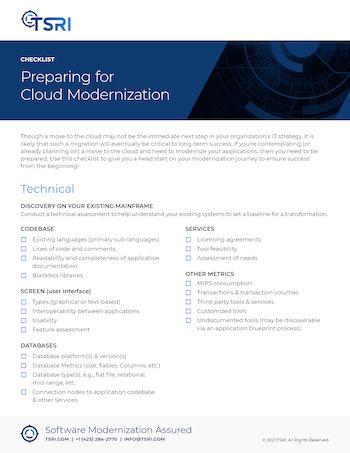
Download and print your own modernization checklist
While most businesses that rely upon mainframes will need to modernize in one way or another, every organization’s needs will be different. Base your organization’s decisions not just on the flashiest current technologies, but on the methodologies and technologies that will work best for your company today and into the future. TSRI can work with you to complete this checklist assessment to start you on the path of a fully automated mainframe modernization. Contact us now to begin!
TSRI is Here for You
As a leading provider of software modernization services, TSRI enables technology readiness for the cloud and other modern architecture environments. We bring software applications into the future quickly, accurately, and efficiently with low risk and minimal business disruption, accomplishing in months what would otherwise take years.
See Case Studies
Learn About Our Technology
Get started on your modernization journey today!
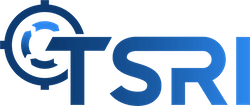

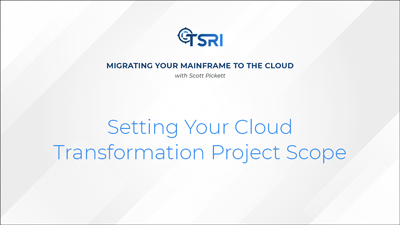
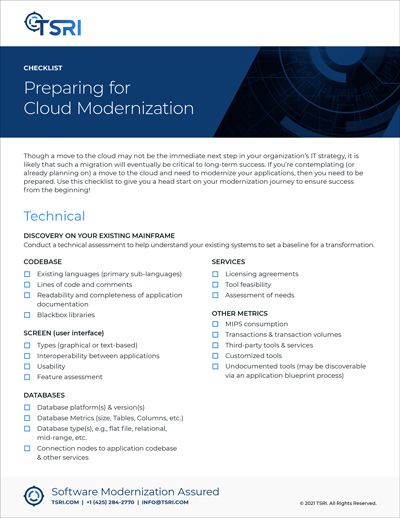 Check out this article featuring a downloadable
Check out this article featuring a downloadable 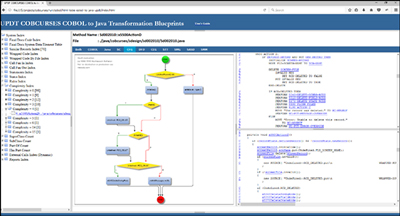
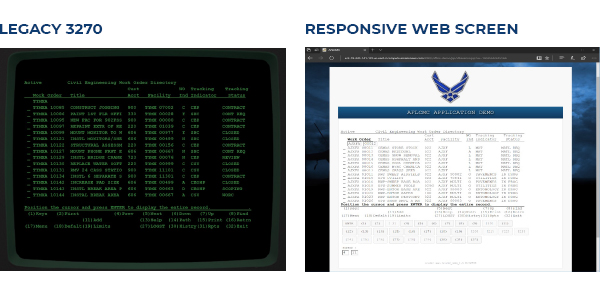
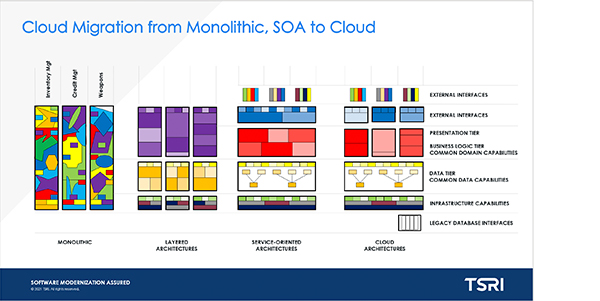
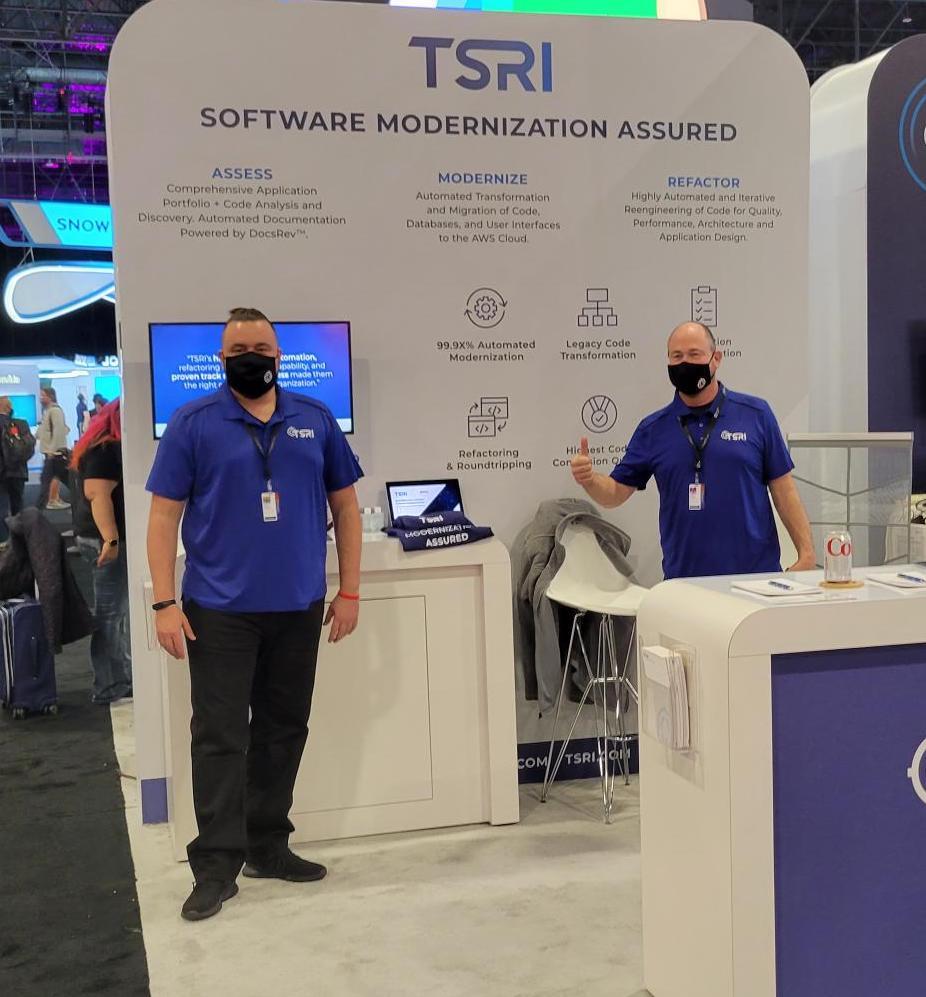
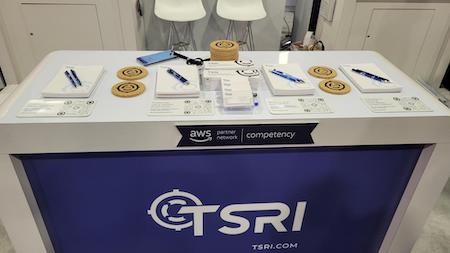
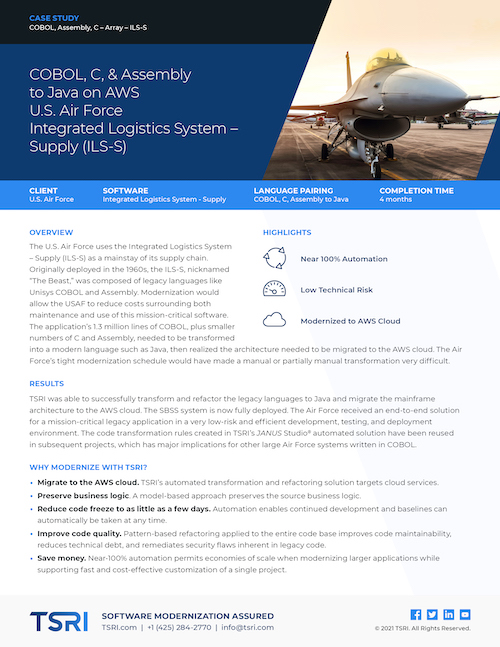
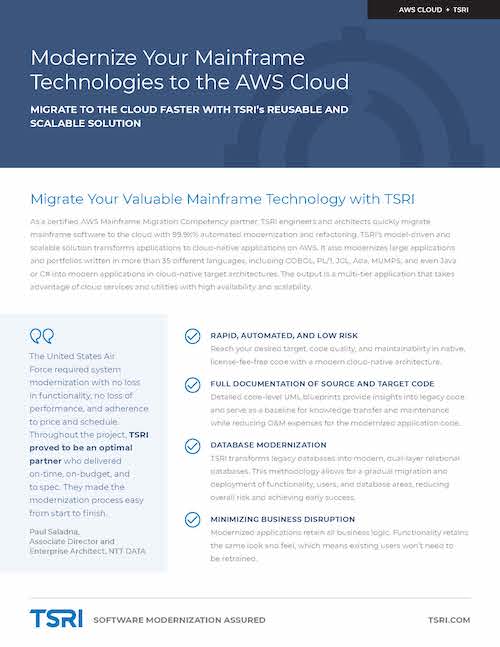
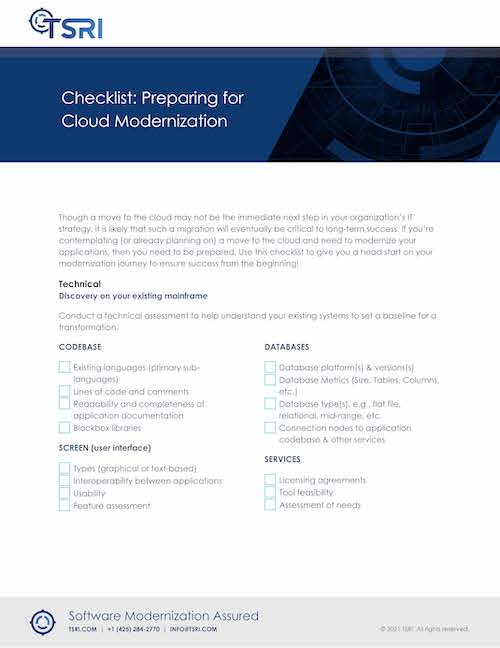
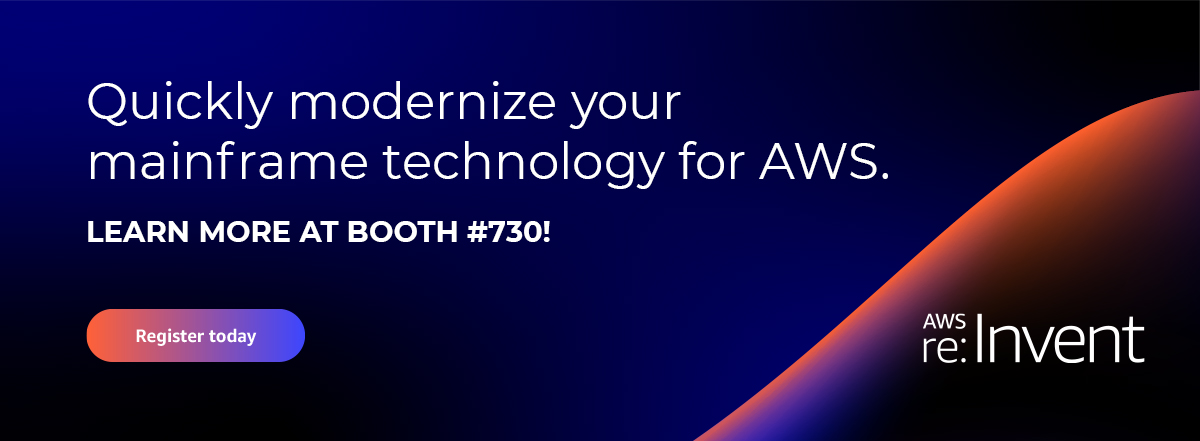

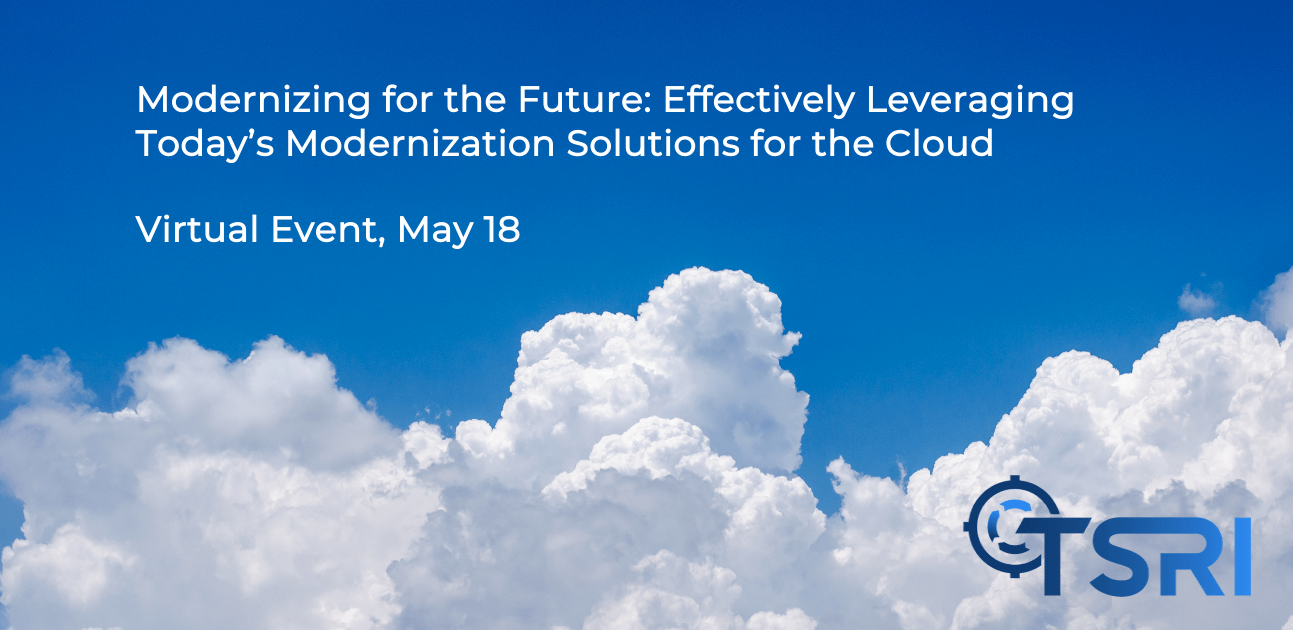


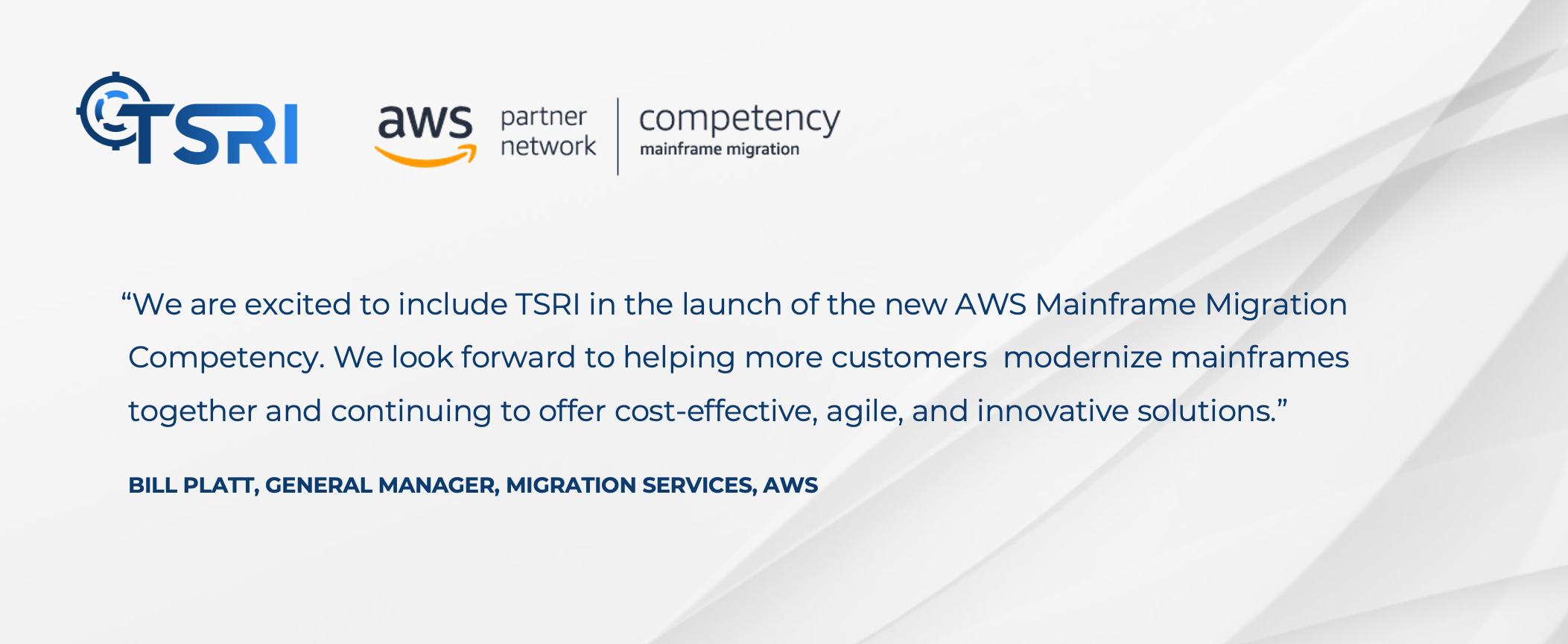
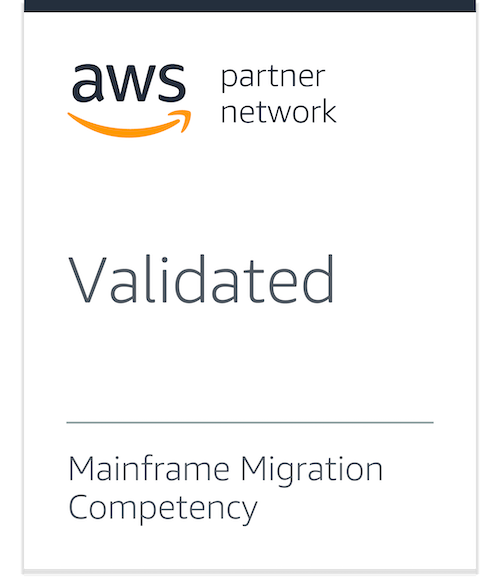 “Now more than ever, businesses are looking to migrate and modernize their mainframes with AWS. To help customers make the right choices when finding the most qualified AWS Partner for the job, we’ve created the new AWS Mainframe Migration Competency for customers to easily identify expert AWS Partners with repeatable mainframe migration success,” said Bill Platt, General Manager, Migration Services, AWS. “These AWS Partners are vetted by AWS for their mature solutions with proven customer migration success, and we are excited to include TSRI in the launch of the new AWS Mainframe Migration Competency. We look forward to helping more customers modernize mainframes together and continuing to offer cost-effective, agile, and innovative solutions.”
“Now more than ever, businesses are looking to migrate and modernize their mainframes with AWS. To help customers make the right choices when finding the most qualified AWS Partner for the job, we’ve created the new AWS Mainframe Migration Competency for customers to easily identify expert AWS Partners with repeatable mainframe migration success,” said Bill Platt, General Manager, Migration Services, AWS. “These AWS Partners are vetted by AWS for their mature solutions with proven customer migration success, and we are excited to include TSRI in the launch of the new AWS Mainframe Migration Competency. We look forward to helping more customers modernize mainframes together and continuing to offer cost-effective, agile, and innovative solutions.”